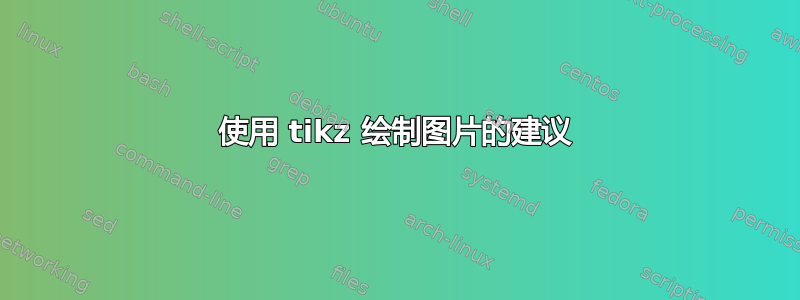
答案1
概念上类似于Colo 的回答很棒但使用普通的 Ti钾Z“仅”,并带有椭圆弧和弯曲箭头。
\documentclass[tikz,border=3mm]{standalone}
\usetikzlibrary{arrows.meta,bending,calc,decorations.markings,intersections}
\tikzset{%
attach arrow/.style={thick,
decoration={
markings,
mark=at position 0 with {\pgfextra{%
\pgfmathsetmacro{\tmpArrowTime}{\pgfkeysvalueof{/tikz/arc arrow/length}/(\pgfdecoratedpathlength)}%
\xdef\tmpArrowTime{\tmpArrowTime}}},
mark=at position {#1-3*\tmpArrowTime} with {\coordinate(@1);},
mark=at position {#1-2*\tmpArrowTime} with {\coordinate(@2);},
mark=at position {#1-1*\tmpArrowTime} with {\coordinate(@3);},
mark=at position {#1+\tmpArrowTime/2} with {\coordinate(@4);
\draw[-{Stealth[length=\pgfkeysvalueof{/tikz/arc arrow/length},bend]}] plot[smooth]
coordinates {(@1) (@2) (@3) (@4)};},
},
postaction=decorate,
},
attach arrow/.default=0.5,
arc arrow/.cd,length/.initial=2mm,
}
\begin{document}
\begin{tikzpicture}[bullet/.style={circle,fill,draw,inner sep=1.5pt,label=#1}]
\path (0,2) coordinate[bullet={above:$y$}] (y)
(0,-2) coordinate[bullet={below:$x$}] (x);
\draw[thick,attach arrow,name path=a] (x) arc(270:90:2) node[midway,left]{$a$};
\draw[thick,attach arrow,name path=b] (x) to[bend left=40] node[midway,right]{$b$} (y);
\draw[thick,attach arrow] (x) to[bend right=40] node[midway,right]{$c$} (y);
\draw[thick,attach arrow] (x) arc(-90:90:2) node[midway,right]{$d$};
\foreach \X in {1,...,7}
{\path[overlay,name path=h\X] (-2.2,-2+4*\X/7) -- (0,-2+4*\X/7);
\draw[name intersections={of=a and h\X,by=il},
name intersections={of=b and h\X,by=ir},dashed]
let \p1=($(ir)-(il)$) in (il)
arc[start angle=180,end angle=0,x radius=\x1/2,y radius=\x1/8];
\draw[name intersections={of=a and h\X,by=il},
name intersections={of=b and h\X,by=ir}]
let \p1=($(ir)-(il)$) in (il)
arc[start angle=180,end angle=360,x radius=\x1/2,y radius=\x1/8]; }
\end{tikzpicture}
\end{document}
答案2
tkz-euclid我通过和找到了解决方案tikz。
获得左侧小圆环的思路(我认为这是最困难的部分)是将不同的水平线与左侧的两个圆弧相交。我通过\tkzInterLC返回所需的交点(即\tkzGetPoints{l'}{l})获得了此结果。您必须丢弃其中一个,因为它代表右侧的第二个交点。
水平线位于不同的层次:
\foreach \i in {.6,1.2,1.8}{
\tkzDefPoint(-1,\i){l}
\tkzDefPoint(1,\i){r}
\tkzInterLC(l,r)(O,A)\tkzGetPoints{l'}{l}
\tkzInterLC(l,r)(D,x)\tkzGetPoints{r'}{r}
\draw (l) to[bend right] (r);
\draw[dashed] (l) to[bend left] (r);
}
我找不到解决方案,无法用漂亮的箭头标签正确地装饰弧线。因此命令\node[] (arrow) at (A) {$\wedge$};需要改进。
无论如何,你明白了
和
\documentclass[11pt,a4paper]{article}
\usepackage{tikz}
\usepackage{tkz-euclide}
\usetkzobj{all}
\begin{document}
\begin{tikzpicture}
\tkzDefPoints{0/2/O,-2/2/A,2/2/D,0/4/y,0/0/x}
% main structure without arrows labels
\tkzDrawCircle(O,A)
\tkzDrawArc[color=black](D,y)(x)
\tkzDrawArc[color=black](A,x)(y)
% % nodes to get small rings
\foreach \i in {.6,1.2,1.8}{
\tkzDefPoint(-1,\i){l}
\tkzDefPoint(1,\i){r}
\tkzInterLC(l,r)(O,A)\tkzGetPoints{l'}{l}
\tkzInterLC(l,r)(D,x)\tkzGetPoints{r'}{r}
\draw (l) to[bend right] (r);
\draw[dashed] (l) to[bend left] (r);
}
% another loop needs because \tkzInterLC has two results (on the undesidered right side)
\foreach \i in {2.4,3,3.6}{
\tkzDefPoint(-1,\i){l}
\tkzDefPoint(1,\i){r}
\tkzInterLC(l,r)(O,A)\tkzGetPoints{l'}{l}
\tkzInterLC(l,r)(D,x)\tkzGetPoints{r'}{r}
\draw (l') to[bend right] (r');
\draw[dashed] (l') to[bend left] (r');
}
% bad but functional way to print the arrows
\node[] (arrow) at (A) {$\wedge$};
\node[] (arrow) at (D) {$\wedge$};
\node[] (arrow) at (-.82,2) {$\wedge$};
\node[] (arrow) at (.82,2) {$\wedge$};
% last labels
\tkzDrawPoints(x,y)
\tkzLabelPoint[left](A){$a$}
\tkzLabelPoint[right](D){$d$}
\tkzLabelPoints[above](y)
\tkzLabelPoints[below](x)
\end{tikzpicture}
\end{document}





